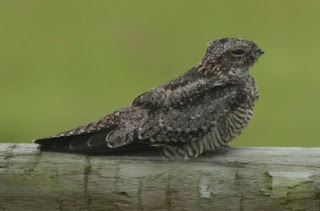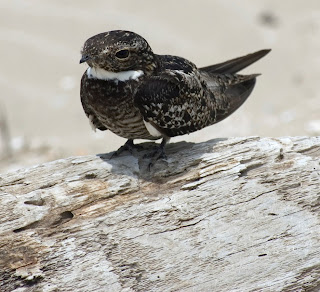Dave Patton, Mac Myers, and I went to Cameron Parish yesterday to see if there were any holdovers from the front that pushed through two days before. The weather was as close to perfect for a mid-April day as you could ask for, with a cool east wind making the temperature just right in the sun in the morning, and in the shade in the afternoon. In the morning I had the pleasure of making a new friend, John Romano, a SWLA birder whose posts to the LaBird listserv I enjoy. In the afternoon, I had the pleasure of running into an old friend, Tom Finnie, photographer and raconteur extraordinaire. And all day long, I had the great fortune to enjoy and renew many old acquaintances among the citizens of the bird world.
The diversity of birds wasn't spectacular, but it was colorful. Tanagers were present in good numbers, and generally pretty conspicuous.
This male Scarlet Tanager was perched low to avoid the wind, and maybe to regain some energy after a long migratory flight. My photo doesn't do justice to the bird's real color.
One interesting observation involved trees, specifically, the Toothache Tree. Also known as Hercules's Club (from its scientific name, Zanthoxylum clava-herculis) and Prickly Ash, this tree is flowering now in southwest Louisiana. In several spots we saw short toothaches with groups of warblers attached. Whether it was the flowers, bugs attracted to the flowers, or some other variable, one tree of no more than 6 feet in height attracted the following warblers: Hooded, Kentucky, Northern Parula, Black-throated Green, American Redstart, Yellow, and Tennessee.
Another encouraging observation involved a reptile. In an area that I visit regularly, I saw my first Speckled Kingsnake since the destruction of hurricanes Rita and Ike. This was actually the first snake other than Cottonmouth I've seen in the cheniers post storms. I can only hope the Slender Glass Lizard makes a reappearance in these areas soon (I did see one roadkill a few years back near Peveto).
At the Baton Rouge Audubon Society sanctuary at Peveto Woods, bird(watch)ers were as prevalent as birds. As Dave noted, the Summer Tanager below was probably photographed by all of us as it haunted one small flowering acacia (I failed to mention that the sweet smell of this beautiful tree was present in the wind all day).
Shorebirds were also well-represented, and many were in nice breeding color. American Avocets were in present in several places.
All in all, a beautiful day with good company and good birds. This year, relaxation has been the rarity I most want to find, and yesterday I got a good look at it.


























































